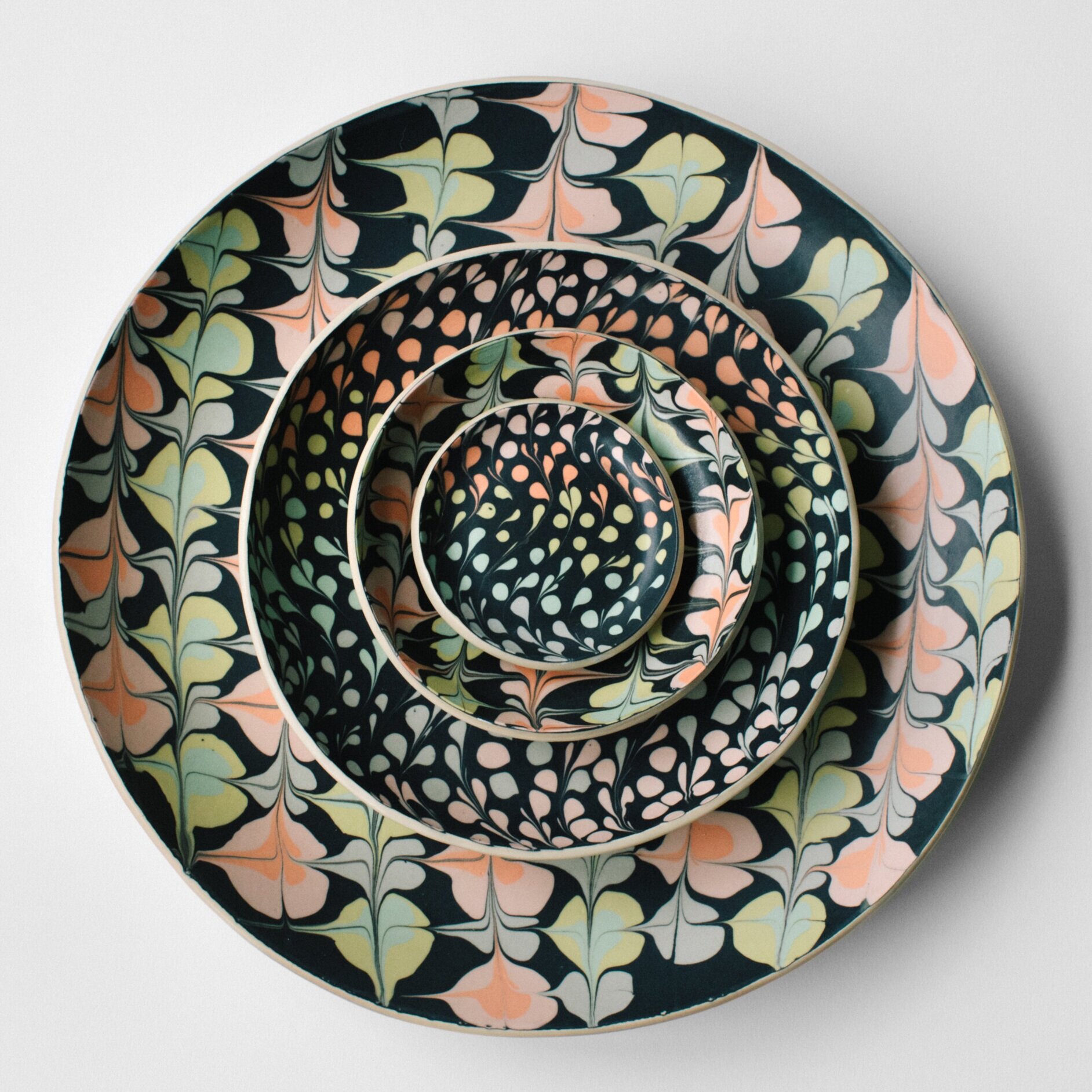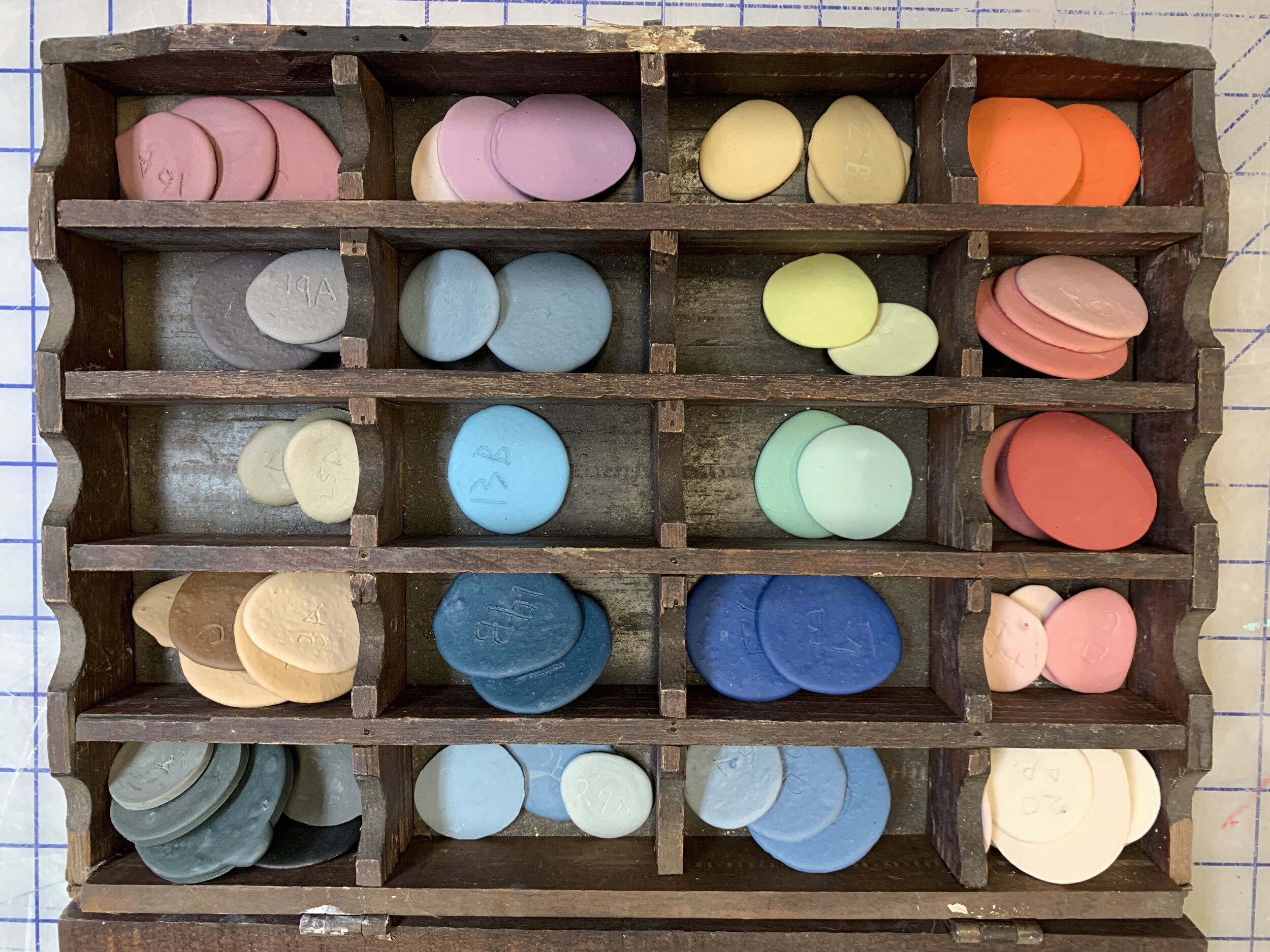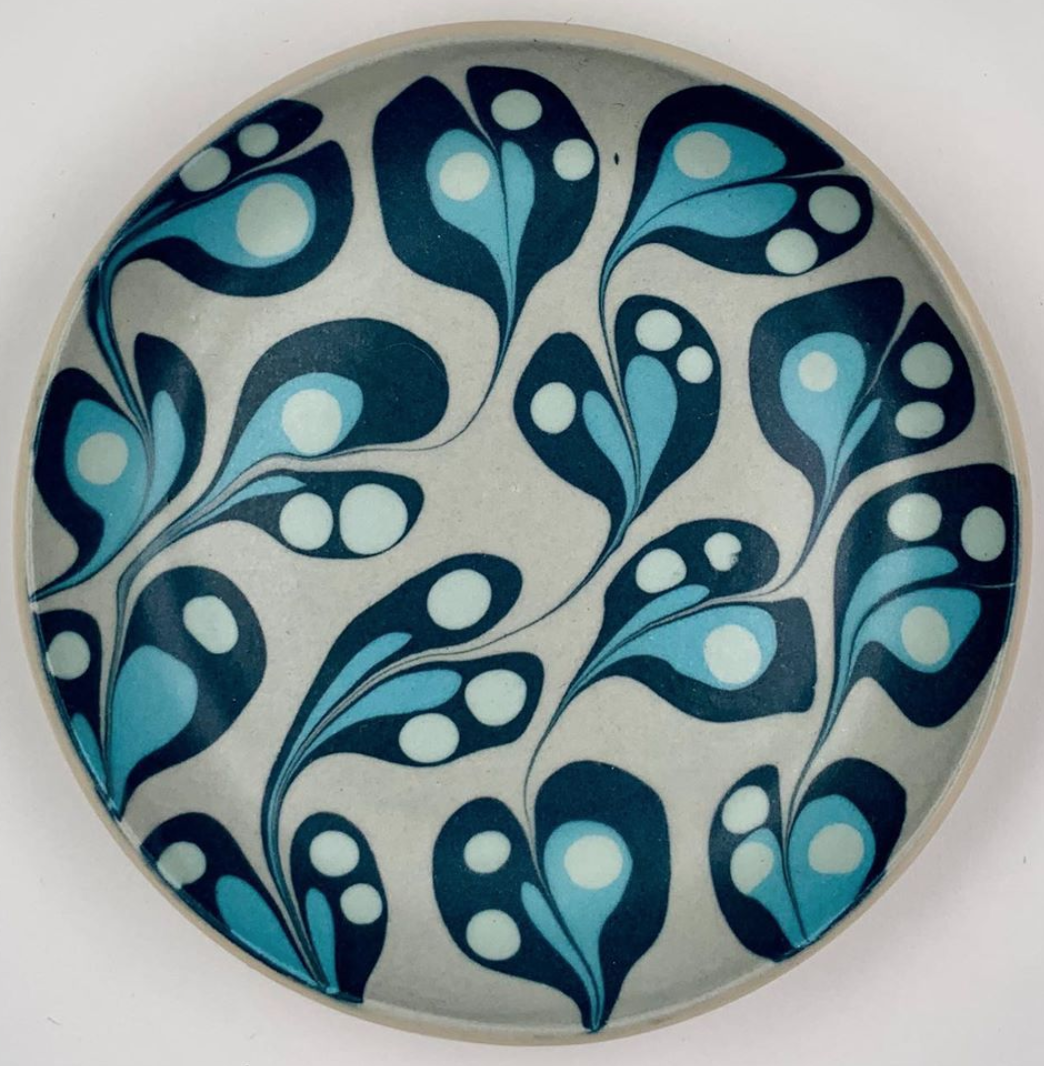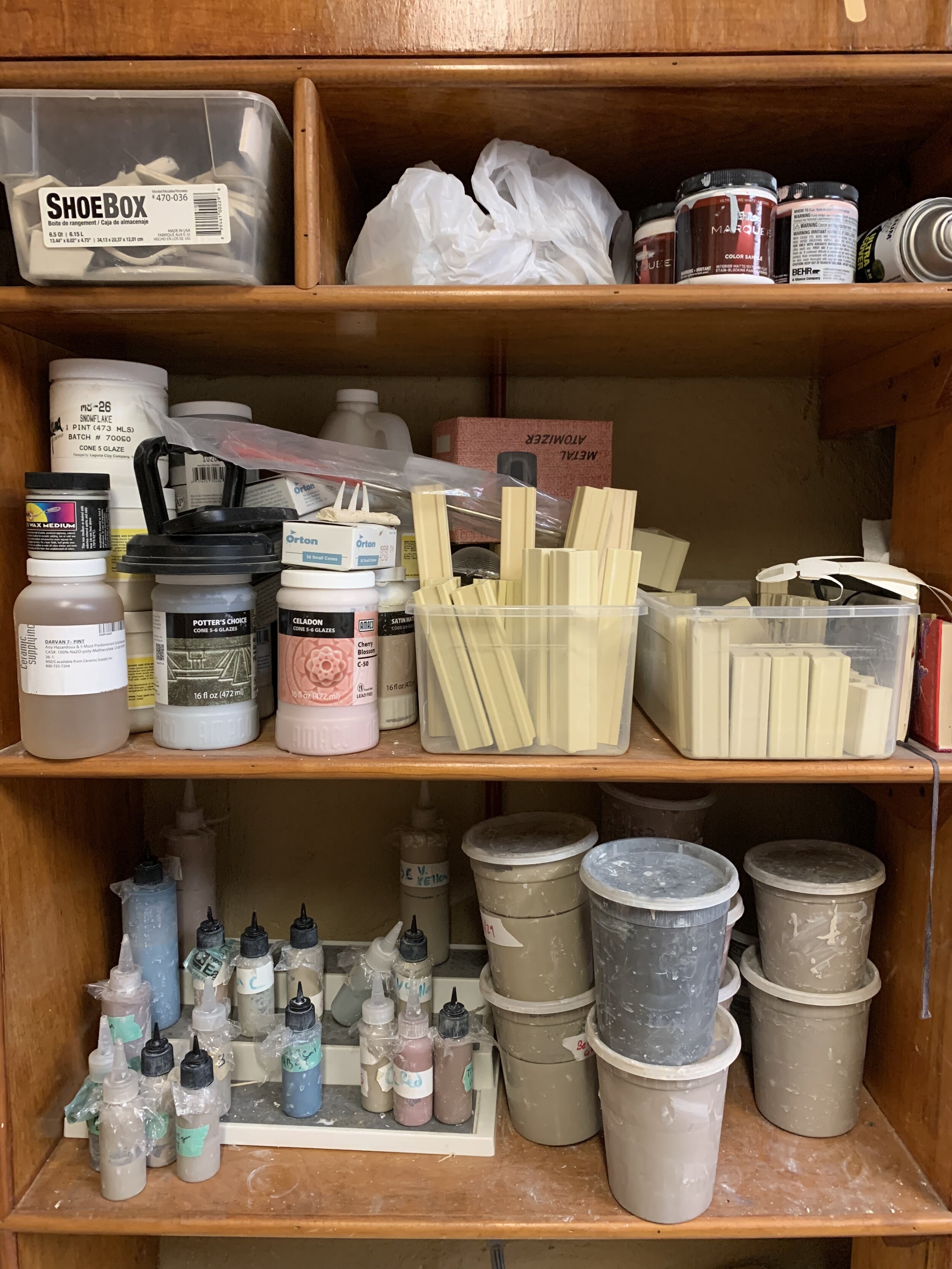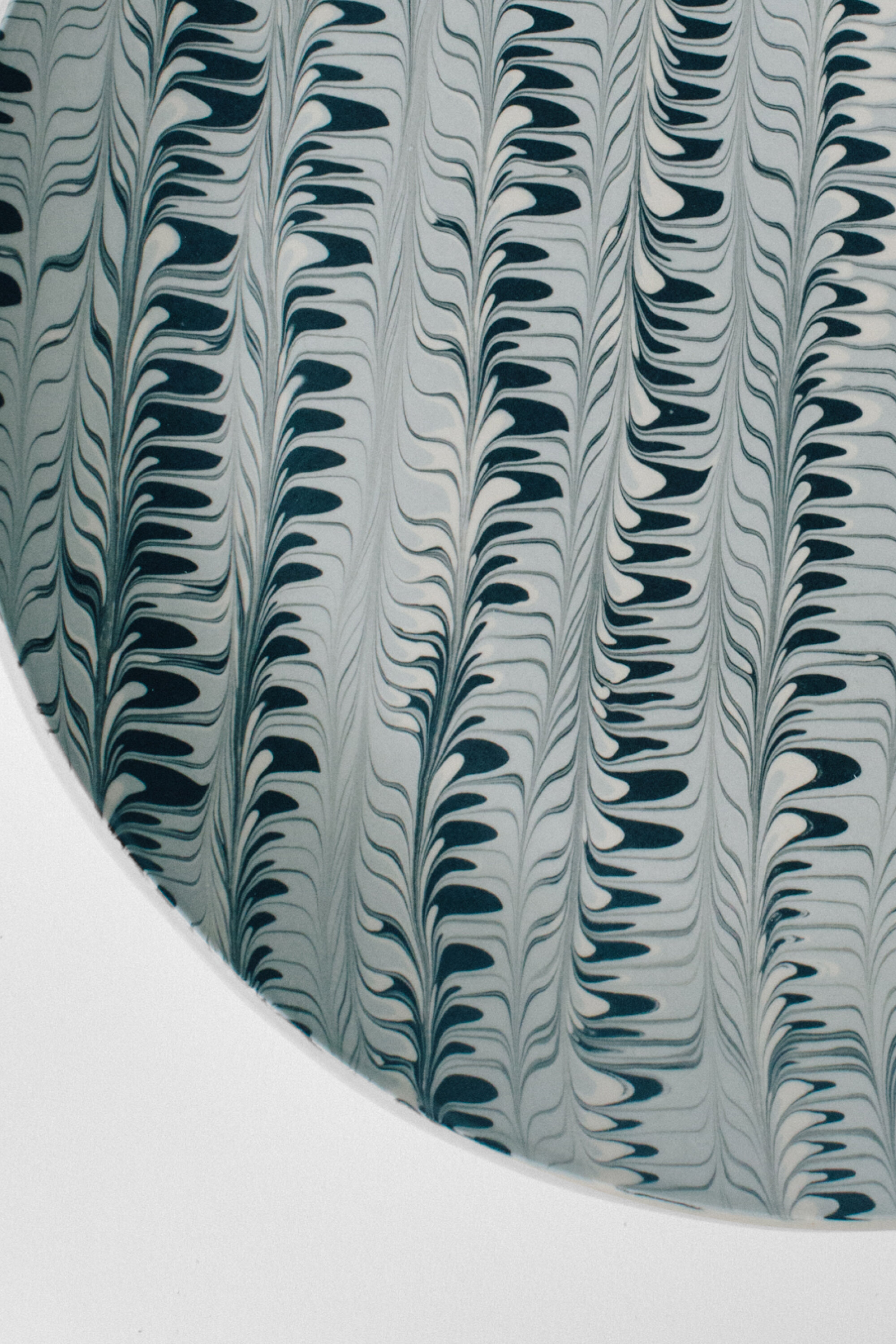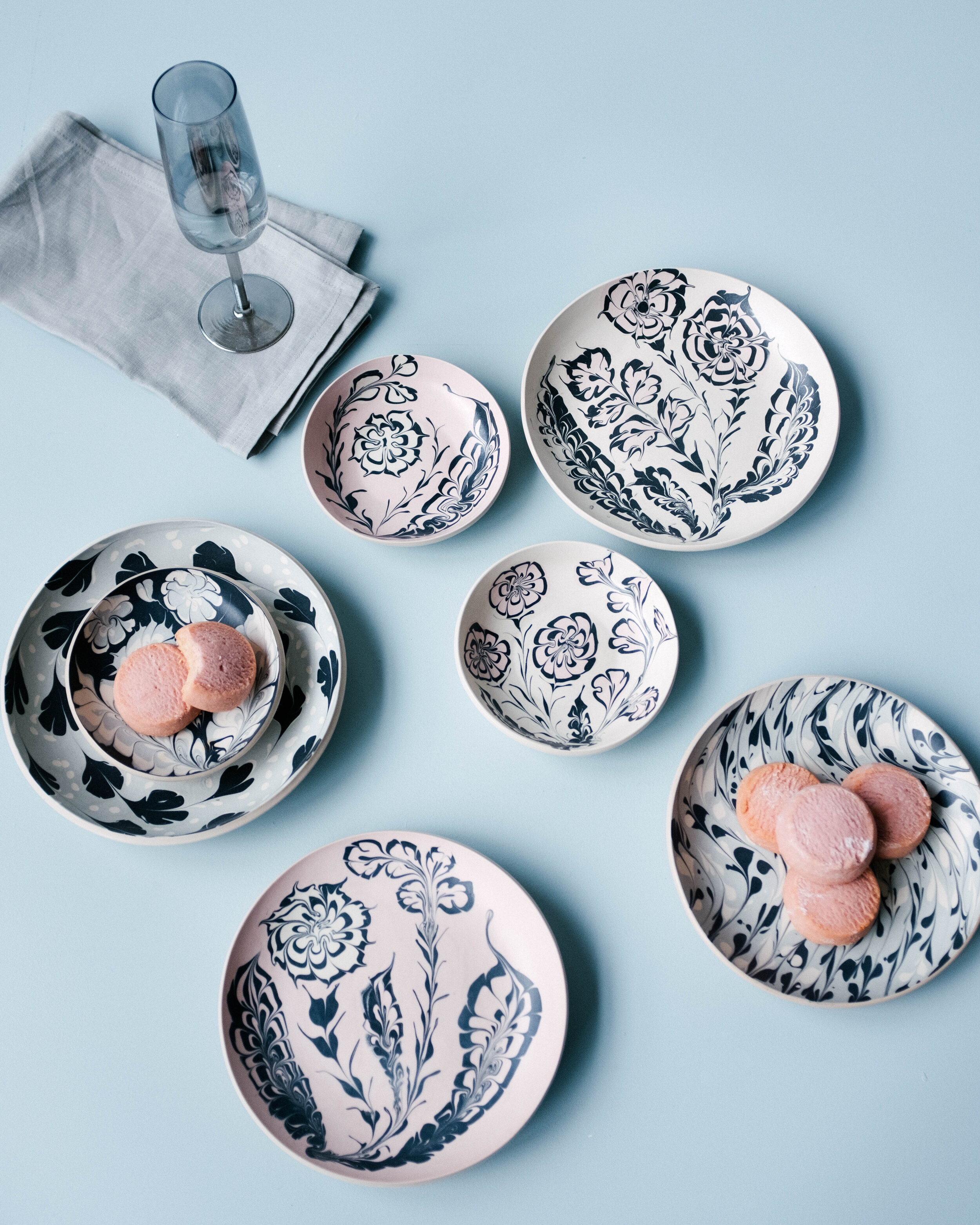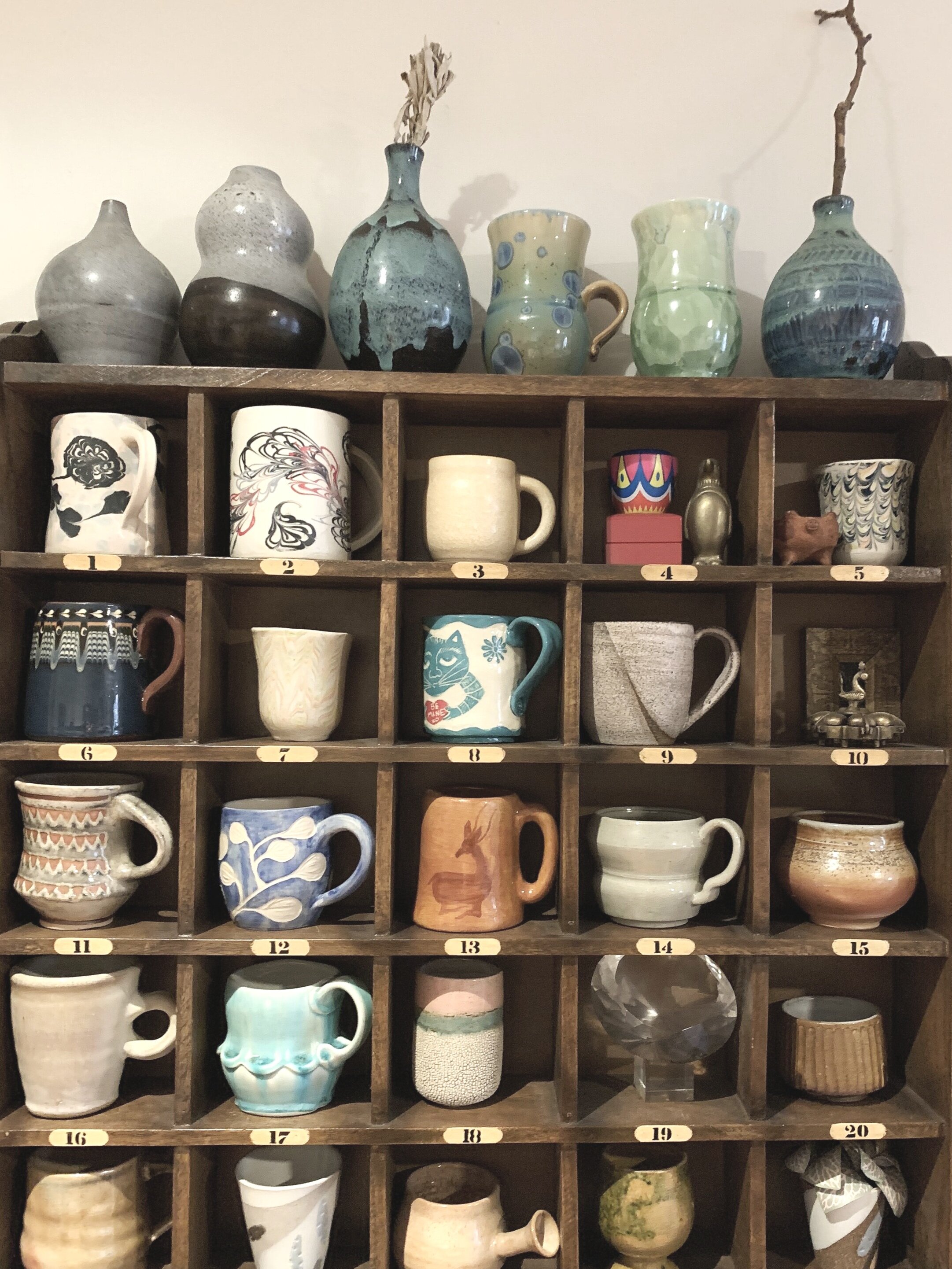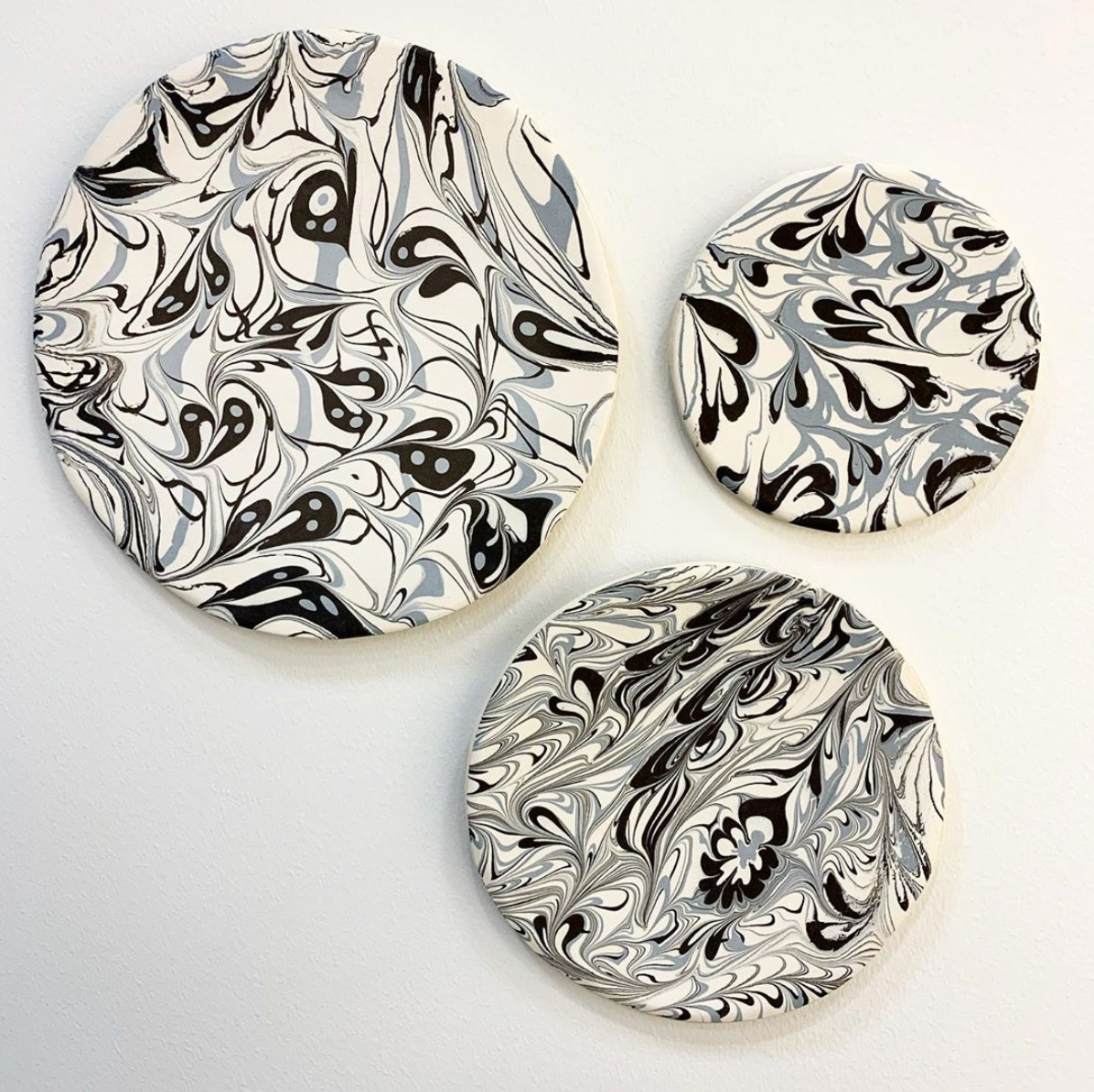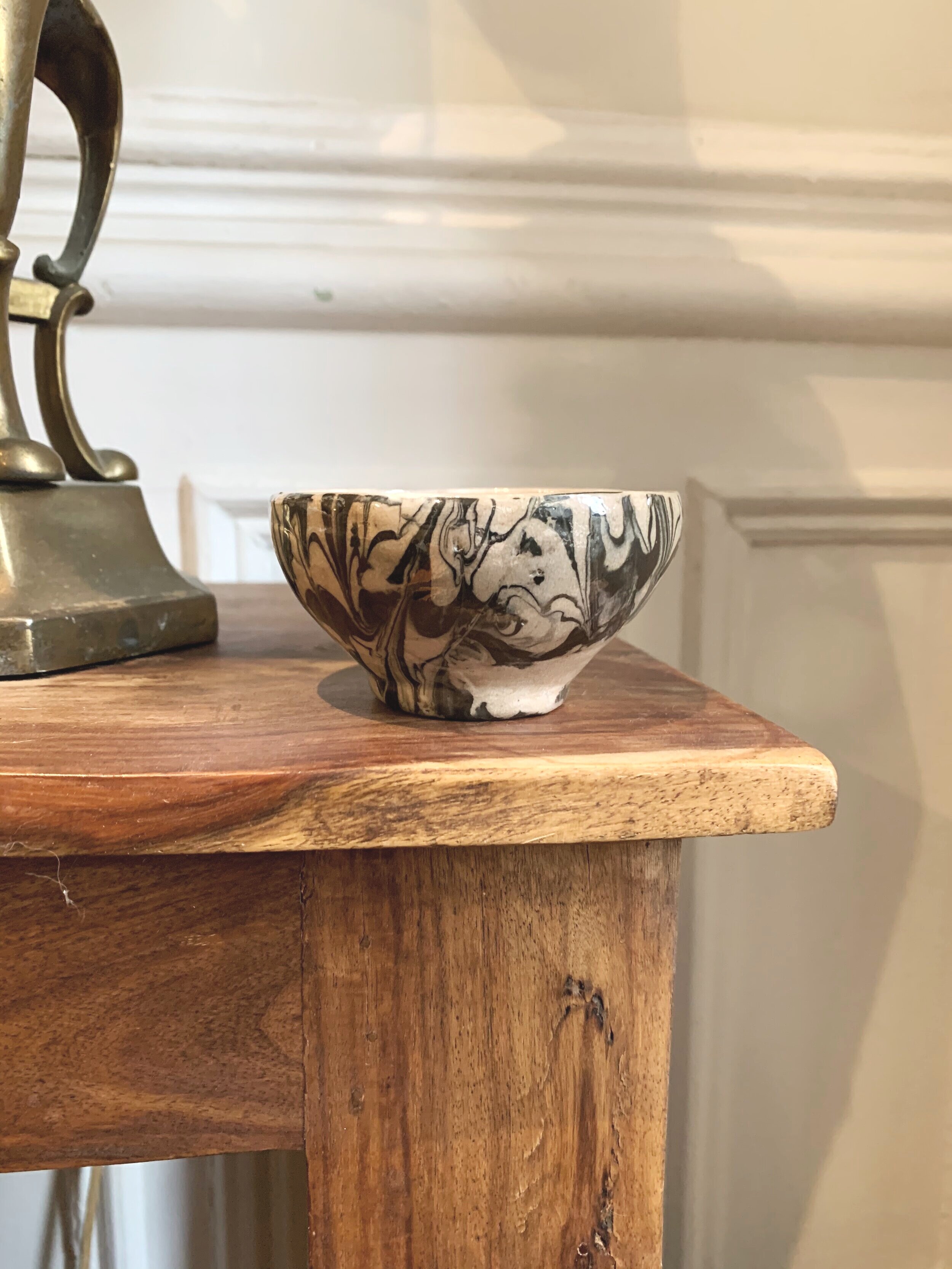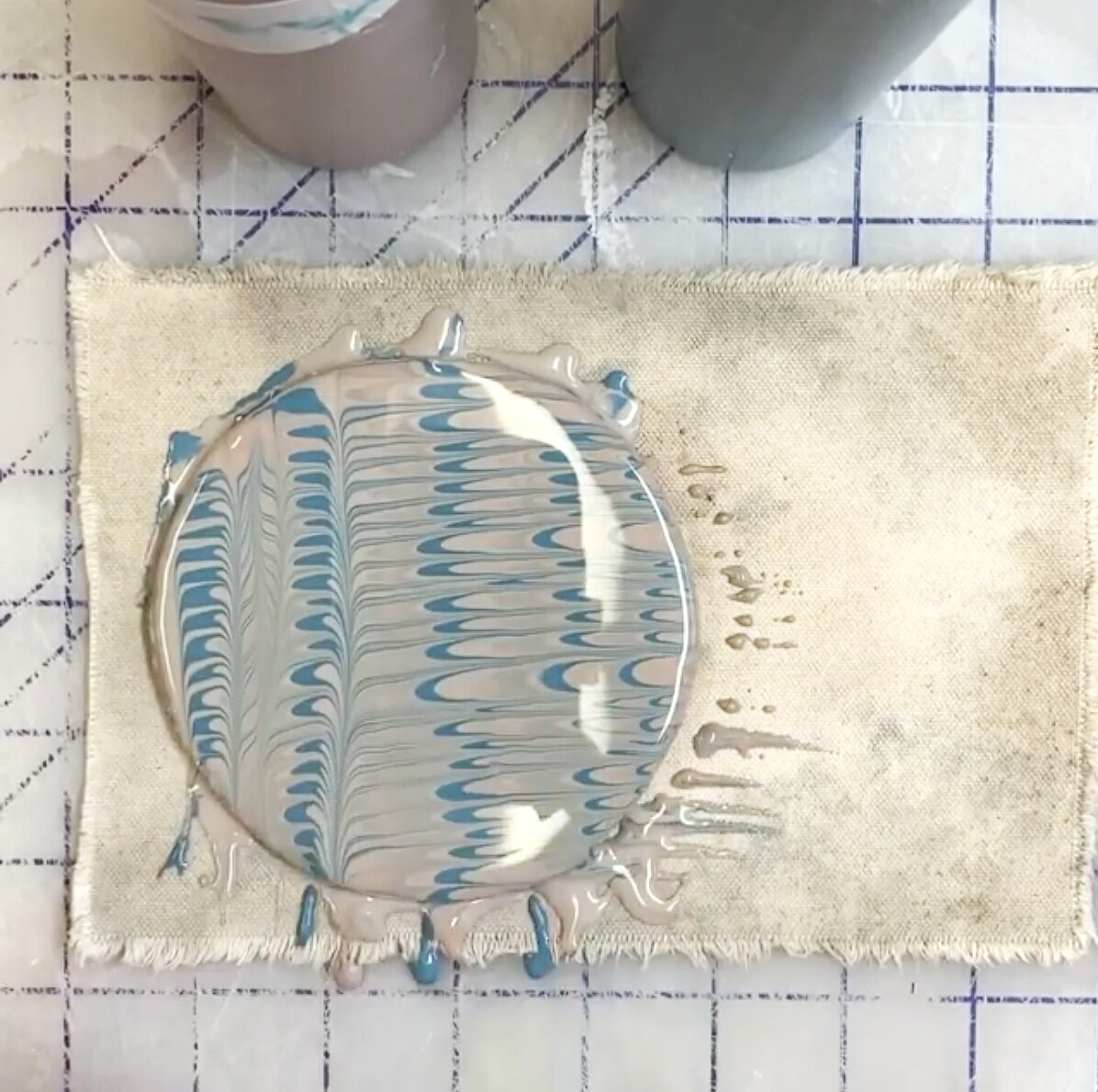Color & Pattern Interview Series: Morgan Levine Ceramics
Morgan Levine Ceramics
Part of my job as a trend forecaster is finding new talent in art, fashion, interiors, food, etc. I am constantly researching and stumbling upon interesting people, which is why I started this color and pattern interview series. And after traveling to over 50 countries for trend research I have also met a lot of amazing and talented people that I want the world to know about!
Last fall I had the pleasure of doing a studio visit with the talented ceramic designer, Morgan Levine. I found Morgan’s stunning pieces via Instagram and was mesmerized with her multiple fluid patterns and the juxtaposition of her gorgeous pastels alongside saturated primary hues. The result of her beautiful ceramic collections are that no two pieces are ever alike. And when you layer her plates together or style a table with her work, the pattern on pattern effect creates sophisticated eye candy. As she states, her work references “17th century Staffordshire slipware, Turkish Ebru patterns, Venetian marbled papers and French agateware, but I've tinkered with the palette to create something new.” She currently sells her pieces on her website and a small collection at Anthropologie. Morgan’s work is definitely one to watch!
Fun fact: When we met in person we looked familiar to each other, only to realize we had previously worked together at Martha Stewart over 10 years ago! The world works in fascinating ways. Check out the interview in her words along with images of her work and behind the scenes details of her studio:
Above images from left: Confetti color palette w/ Dot and Wing patterns / Color chip samples / Plate from the new Cobalt collection in a Peacock pattern / Detail of Morgan’s studio
1. How did you get started making ceramics?
I started when I was a little kid, around age 7 when I took ceramic classes from a woman in my neighborhood. I then stayed crazy about ceramics forever and throughout high school I took classes at this national park arts center near where I grew up. Then I went to Pratt for industrial design thinking I knew I wanted to make tableware so it seemed like a smart thing to do. At the time they didn't have the best ceramic program, but I experimented and continued to work with ceramics as much as possible. Eventually I landed in this craft and prop styling world and in the last 20 years I've been in NYC I'v always been on the look out for a ceramic studio space. I then started going to workshops such as Haystack in Maine and Anderson Ranch in Colorado and realized how much I had missed clay and was able to turn my day job of craft and prop styling (and that studio space) into my current ceramic studio today.
2. Your patterns are rooted in historical references, were you always drawn to history or is there a reason why you look to the past? Do you have a favorite pattern you have created?
It's less that I'm looking at the past for patterns and realized that was captivated me was how things are formed over time, such as layers of rock. I started looking back into different cultures and saw that people have used marbling techniques with water, but also clay....and I learned that every culture has something that feels very related to the stuff I've been working on. I'm definitely not running around the world saying I invented marbleizing. I really like how different patterns can look through the different techniques and cultures and then when you tinker with the color palette it's a whole other beast.
My favorite pattern is always moving around, but currently I love the more figurative floral designs. It's the one pattern I've been struggling with the most and getting it consistently looking good. There is something so cool to me about fluid sitting on fluid and with the little manipulation it's this super figurative design. Each one looks different, but they still work as a set.
3. Do you design collections so you can have multiple different patterns on a table or was the initial starting point only one pattern?
My vision was that you could have multiple patterns sit together on the table. Each of the collections (from the Pebble to Confetti collections) can still live together on the same table because of working within a certain color palette and keeping it coherent. But I do like playing around with color and will have repeat customers due to creating new colors for new collections.
Above images from left: Plates from her Pebble, Confetti and Sky collections / Close-up of a Feather pattern / Floral pattern plates / Close-up of the glazing process (the background comes out pink after it gets fired!
4. Where do you look for inspiration to create new colors? Do you have a favorite color palette you’re currently working with?
Due to my styling background, I'm always paying attention to color palettes out in the world and online to stay aware of what looks fresh or new to me. However, I'm also limited by the colorants that will show up in the fired ceramic work.
Before I start with a new color I do a test of what different concentrations will look like. When I first started I made a swatch sheet of my aspirational colors and started tinkering with different stains. With my color palettes, I never want my designs to become super primary or pastel. I like weird, bright colors, but people also like neutrals especially to eat off of, so I try to touch on crazy, fun colors while also throwing in some softer shades. However sometimes pairing a weird color with another weird color can magically become a neutral.
My favorite new color palette is the super fun Recess. I started with a very basic blue, and was stunned to learn a few weeks later that it's this year Pantone color of the year. I've been making my Recess pieces using a new peacock pattern. I love how the unmanipulated dots look beside the fluid quality of all of the other shapes.
I also brought in a new Cobalt palette. I made the first Cobalt Dot pieces as a custom order, but got such a positive response on IG that I decided to expand it to the Peacock pattern.
5. Is there a part of the process of making the ceramics that might surprise the reader to know? Or a fun fact about you and your work?
How long everything takes! Assuming I have perfected the color and pattern, a plate for example will take about 2.5 weeks because everything needs to dry slowly. The first step happens over two days. I schedule wisely because if I don't get in the second day that results in the first days work getting thrown out. If I'm doing a new test on something it will typically take 3.5 or 4 weeks to find out if what I did on day 1 was affected or worked out. There are a lot of technical issues that have to be figured out from how wet or dry the clay is to how hot the kiln needs to be.
6. Can you give any insight into new colors, patterns or ideas you are currently experimenting with?
Right now I'm busily filling orders and building up stock for the Smithsonian Craft Show in DC in April and Field and Supply in May in Kingston, NY. Once I get caught up with my plate production, I'll be shifting back to mugs. I made some and they sold out really quickly, but more will be coming soon. I also have plans for wall hangings, menorahs, Seder Plates, candle holders, vases, and oval plates, but developing new shapes takes a while, so it's hard to say when they'll be ready. I also have a new palette in mind for my Sky collection, inspired by Morinda and Indonesian natural dye.
Above images from left: Morgan’s mug collection including one of her earlier designs / A new pattern and wall hanging experiment / One of Morgan’s first bowls she made / Process of creating a marbleized pattern

